汤姆·梅恩(Thom Mayne),2005年普利兹克建筑奖得主,曾担任美国前总统奥巴马美术和人文委员会成员,其事务所墨菲西思是较早在中国展开实践的国际团队。作为墨菲西思在中国的第一个项目,巨人网络总部办公楼有着怎样的建筑宣言?梅恩如何理解当时的建设环境?下为有方独家视频专访及全文,并附巨人项目介绍。
有方 巨人网络总部办公楼的设计开始于2005年,墨菲西斯是较早在中国展开实践的国际事务所之一。你们当时怎样理解中国?在你们的观察中,中国当时的社会状态如何?
梅恩 第一个问题始于我们对在中国实践的认知的广泛概念,从2005年,12年前开始。毫无疑问,当我们开始着手巨人项目时,我们已经对中国的气质/本质有所理解——比方说,关于建筑和实验精神的关系。在当代我们有将建筑视为一种文化的本质象征的倾向,视之为能够揭示文化本质和文化轨迹的符号。我是从社会、文化、经济和政治等多个角度来考虑这一点。这对任何一个建筑师来说都是非常有趣的,因为它使得建筑成为代表文化的一个中心符号。由此我们可以将建筑理解为一股巨大的力量——在当时的中国,我们在一个这样理解建筑的文化体系里创作:建筑有意义,它带有根植于这个文化的特征。
The first question starts with this very broad notion of our knowledge of practicing in China, beginning in ’05, 12 years ago. I would have said, that there was no question that as we began work on the Giant project, we understood certain aspects of the Chinese temperament, let’s say, connected to architecture having to do with an interest in experimentation, in the contemporary, in the use of architecture as representing the nature of a culture--as being a symbol of the nature of the culture and the trajectory of a culture and I’m thinking in both social and cultural and economic and political terms. That it’s going to be very interesting for any architect because it makes architecture one of the centers of the representations of the symbol of that culture so it’s going to be clearly something that we understand as a huge power and that we are working in a culture that see architecture within those terms: that it has meaning and that it carries characteristics that come from that culture.
有方 此前在接受Vladimir Belogolovsky采访时您曾说,“任何一个建筑都在作出一个宣言”。作为墨菲西斯在中国的第一个项目,巨人集团中心有它想要阐述的“宣言”吗?是什么?
梅恩 我们所有的项目都着重于可以反映复杂现实社会的错综、重叠的系统。在巨人项目中, 我认为可以总结出一些焦点来代表整个项目:设计从一个城镇、村庄、小的都市集群的概念开始,随时间推移它们发展成为一个更大的城市。因此,这一项目对景观的作用有着非常明确的理解,并发展出一个融合景观和建筑的特别系统。这可能是所有人都能理解的最显著的特征:一种介于“增强的景观”(the augmented landscape)和“被使用的景观”(the used landscape)之间的往复关系——这是一种功能性的、带有建筑元素的空间景观。在建筑学术语上,是属于类型学与演变学。
hmm.. All of our work is interested (which you’re going to ask later) about certain levels of complexity and overlapping systems that produce a response to that to the reality of today’s world and its complexity. In this project, I think, we could though sum up certain singular focus points--certain territories--that you could say it was about. We’re really starting with more of an initiating kind of idea of a town, a village, a small urban complex, which is going to develop into a greater city over time. With that, it has a very specific idea about the role of landscape, and it develops a very different system which is hybridized between landscape and building. It’s probably the most prominent feature that anyone would understand as you‘re perceiving the building: this relationship between the back-and-forth between the augmented landscape and the used landscape--the spatial landscape that’s programmatic and elements that are building-like. Typology versus morphology, in architectural terms.
当然,巨人项目是一个工作场所。在与一个高端客户的合作中,我们可以从根本上重新思考办公场所的需求:一种现代的工作场所将直接连接工作、娱乐、休闲、用餐等空间。这将会是与景观有关系的城市规划、建造的概念,而它将推进人们对于工作环境的理解。
With that, of course, is that its purpose is a workplace. And we’re radically rethinking, with a very advanced client, a workplace which now connects to the direct notion of working, recreation, time that you’re relaxing, meals, etc. And it’s going to be the notion of the urban construct, in relation to landscape, that’s all going to be about promoting a much broader notion of workplace in human terms.
有方 在Combinatory Urbanism一书的序言中您曾说,“建筑师应该在任何规模的项目中处理城市问题,项目应始终植根于城市环境中”。那么,在巨人项目的设计过程中,上海给了您什么感受?这座城市是否,以及如何影响了此项目的设计?
梅恩 巨人项目坐落于城市外围,在一个郊区的农场环境当中。我们开始建设的,是该地区的第一个都市构筑物,并且它将成为未来十年、二十年中,引领此地城市设计的原型。如你所说,与世界上绝大多数其他地区相比,现在的上海和中国已呈现出相对紧凑的空间、文化状态,但这仍是一个更广阔计划的初期阶段——这个环境蕴含着成长的潜能,它意味着动态与张力,这一点我们稍后还会谈到。
First of all it’s outside of the city, so it’s a rural situation there - a farm - and we’re beginning the first structure of urban and it’s going to be a generator and you could even say possibly a prototype for a future urban condition and with that it’s going to be seen as the first phase of a decade, two decade, well shanghai and china now again your talking about culturally it’s going to be somewhat condensed compared to most of the world and but it’s still very much a first phase of a broader project and it was seen as that from the very beginning, it implies growth. It implies dynamicism, which we’ll talk about later on.
有方 巨人集团中心建于当时上海的新开发区。这样的一个在某种程度上近似“空白”的基地背景,呼吁着怎样的设计介入?当时是否遇到过困难?
梅恩 就像我已提及的,我们是从郊区的背景开始,并且这个项目是该片区建设、打造城市的启动项目。所以当时我们面前是一块白板,这让我们得到一个非常开放的创作平台,来尝试不同的想法。看来你对我们的工作很了解,巨人项目与我们的许多其他工作是完全不同的,很多其他的设计是绝对被动的。我们此前的许多在都市中的建造,是对周边城市环境的具体反馈;它们反映着周边的城市情况,并将自身定义为既存构筑的结缔组织。但巨人项目,是这一片区建造的起始。
Like I was just saying in the earlier question, we’re starting with a rural condition, and we’re just initiating the first beginning of constructing, building, city-making, with this project, that is going to follow, so we have a tabula rasa, which allows us again kind of very open-ended kind of a platform to look at ideas. And it seems like you know our work quite well, it would be quite different from a lot of our work, which is absolutely reactive. A huge amount of the work we’ve done urbanistically that you talk about from the very beginning, is very much in response to found urban conditions. And it talks about those conditions and very much sees itself as a connective tissue to the found structure. But this is going to begin that process.
有方 诸如在连绵匍匐于地面后突然跃起的悬挑,巨人集团中心的外观复杂而深具张力,就像“在错动裂变、形成他物的过程中被‘抓住’的那一瞬间”。你为什么喜欢实验此类复杂的形式,是什么因素决定了这种复杂?巨人项目中,最大胆的设计是什么?
梅恩 非常有趣的,在某些层面你已回答了自己的问题。我们感兴趣的建筑是拥有城市特性的那一类,并且能够不断地增长、活动,深具动态、自发性以及城市的活力。因为我认为复杂的形制是非常城市化的。而这再次回到了你之前关于“城市制造出发点”的问题——巨人网络总部是这份努力的开始,而且是正在进行时。让我重复一下,它刚刚成型,并处于不断进化的状态。
It’s really interesting, in some ways you are answering your own question, we’re completely interested in an architecture that has a dynamicism, which is urban, and which always implies growth, movement, spontaneity, activity, the energy of the city. Because I would think this complex would be seen as very urbanistic, and it goes back to your earlier question, of the departure point of city making, it‘s the beginning of that effort, and it’s in process. I’m just going to repeat, it’s just becoming, it’s in the state of evolving.
巨人项目的动力与建造和未来有关,它指向扩张和信息的增长。它充满了机会,充满了使不同元素相互碰撞、发生关系的机会。因为也许可以说,这个项目真的就是关于一个过程,它将发明建筑的思考过程转移到工作本身。而现在,在此项目中你能感觉到建造的能量,概念的能量,以及创造本身的能量。我无需过多解释对于这一设计的思考,某种意义上,它是自明的(self-explanatory)。
It has that dynamicism which refers to construction, it refers to the future, infers growth, and expansion, etc. It’s filled with chance, and it’s filled with interrelationships with things that are colliding. There’s no question that maybe you could say that the project really is about process, and it transfers the thinking process of inventing architecture to the work itself, the work now, you feel the energy of the making, you feel the energy of the idea, and the creation, when you say it, and the work finally manifests that, and we don’t come along with that project to explain it. The project is somehow self-explanatory, it’s didactic.
录像 | Jasmine Park
文字整理 | Nicole Meyer、Jaclyn Rusher、Carolyn Ng
文字及视频整理 | 沈璐妍、王亚珂
采访时间 | 2018年1月
采访 | 原源
剪辑 | 赵筱雅
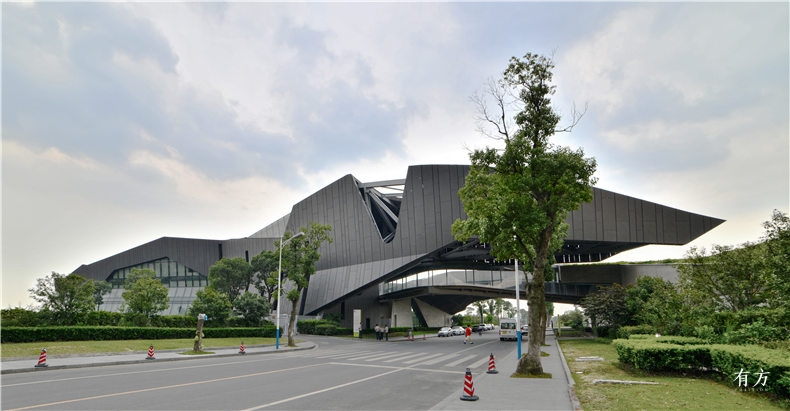
巨人网络总部办公楼是一个综合性项目,在一个可灵活分割的建筑群体中包括各种不同功能区域。项目坐落于现有渠道及人工湖之间,起伏的办公楼与地面层交相呼应,使得建筑和景观紧密连接。东侧的办公区包括三个区域:开放、无等级差异的开敞办公室,隔间办公室,以及悬挑在人工湖上的总裁办公室。其余的功能和抬高的景观融为一体,包括一个图书馆、一个多功能演艺厅、一个展示空间、一个咖啡厅。在西侧,其他的在起伏屋顶景观下的功能包括一个多功能的体育场及附属设施和员工健身房。西侧有招待所,其卧室有可以俯瞰湖面的玻璃地面。
The Giant Campus project is a compact village that accommodates diverse functions in a flexible framework of forms that move in and out of a folded landscape plane. Situated amid existing canals and a new man made lake, the undulating office building interacts with an augmented ground plane, joining architecture to landscape and environment to site. The East Campus office building contains three zones: open, non-hierarchical office space; private offices, and executive suites, which cantilever dramatically over the lake. Additional program is integrated into the lifted landscape, including a library, an auditorium, an exhibition space, and a café on the east campus. On the West Campus, additional program space-submerged below an expansive, undulating green roof- includes a pool, a multi-purpose sports court, and additional relaxation and fitness spaces for employees. The landform culminates to the west at a company guest hotel where glass-floored private bedroom suites project over a wildlife pond.
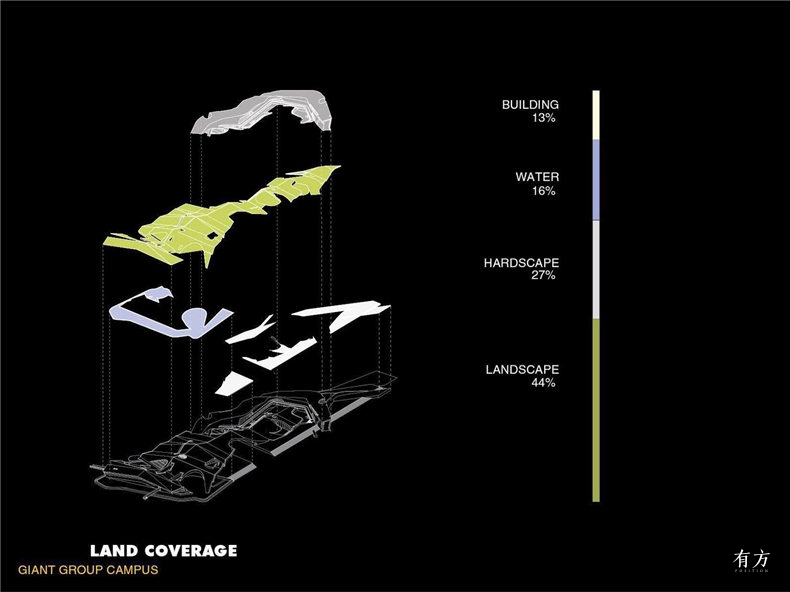
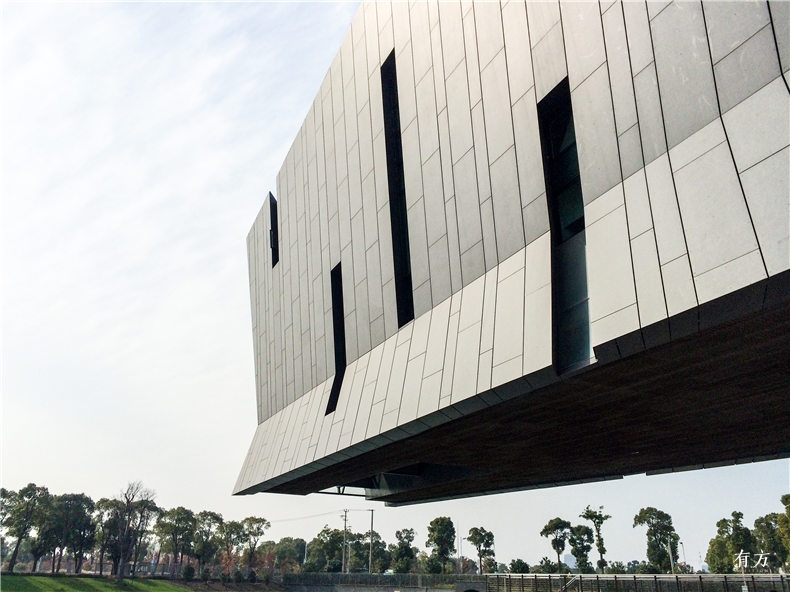
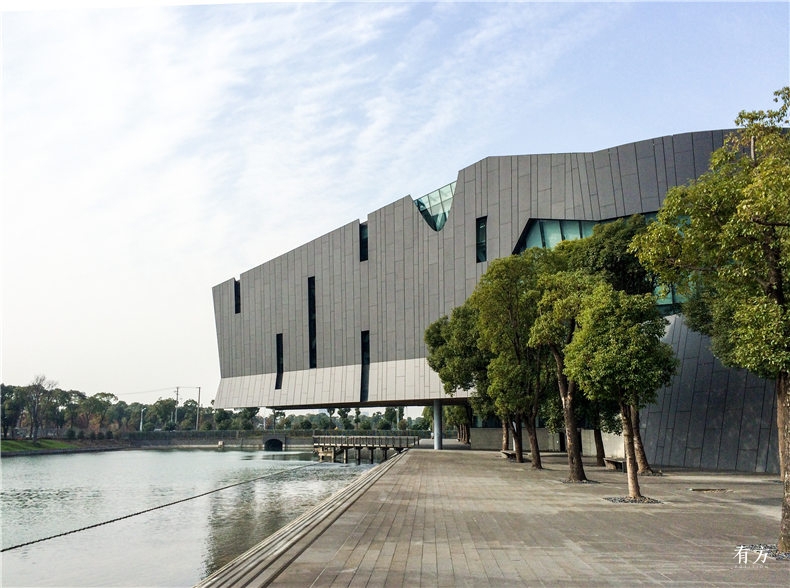
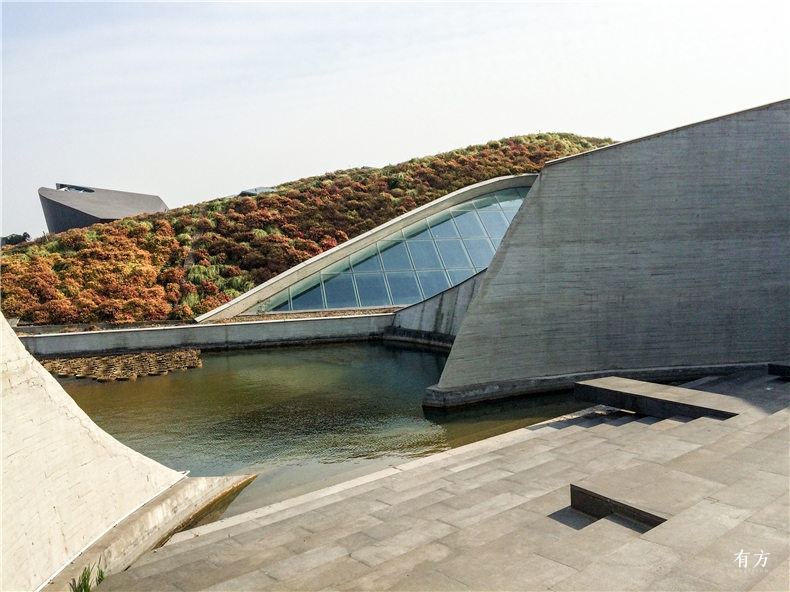
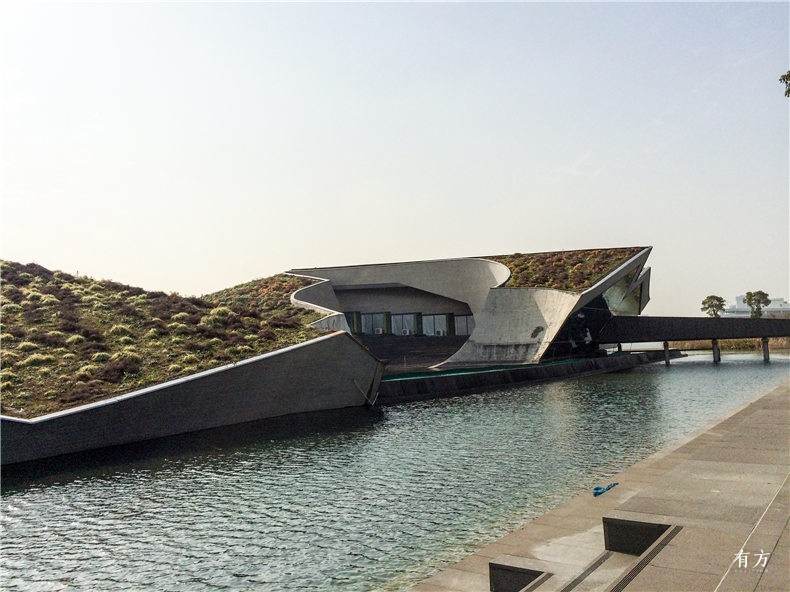
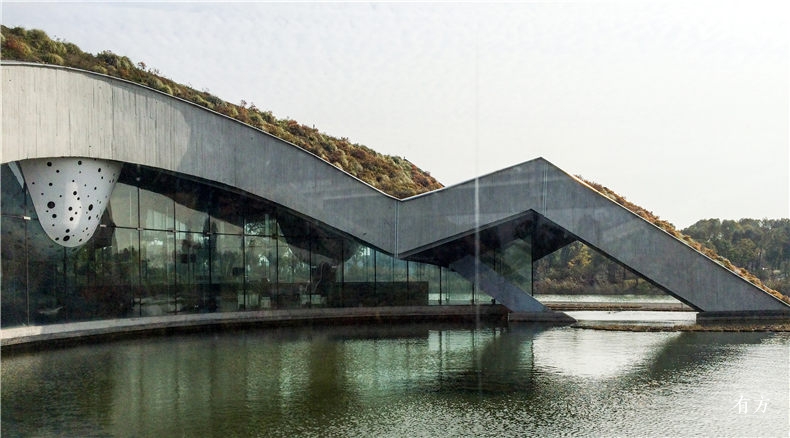
设计将数个广场从地景中抬高、挖凿出来,为员工了提供户外休息和娱乐空间。在办公中心南侧边界,一个人行广场提供了通往人工湖边的通路。主要的连廊在办公楼三层外侧连接主要办公区域而成封闭的空间,并跨越主要道路,连接东西园区。
Several plazas, carved from the landscape, provide outdoor break and recreational spaces for employees. At the south edge of the campus, a pedestrian plaza steps down to the water’s edge in a continuous outdoor walkway that provides pedestrian access to the lake. The main circulation spine, an enclosed walkway located outboard of the office building, bridges over the street connecting the east and west campuses.
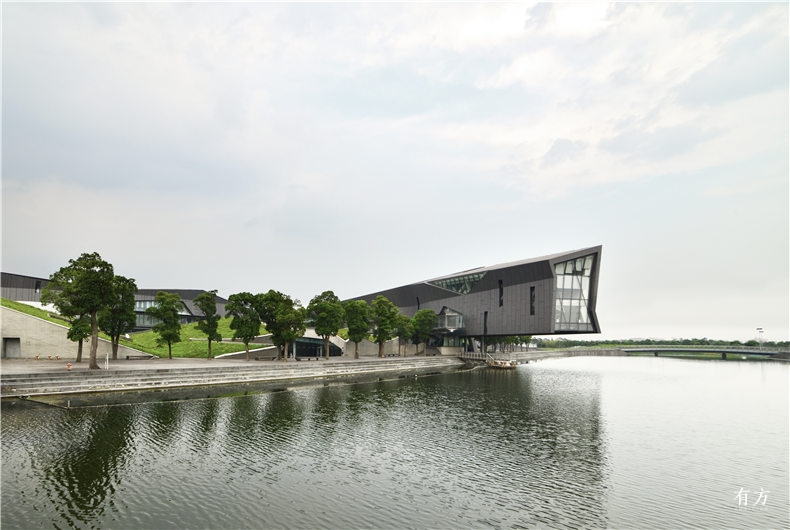
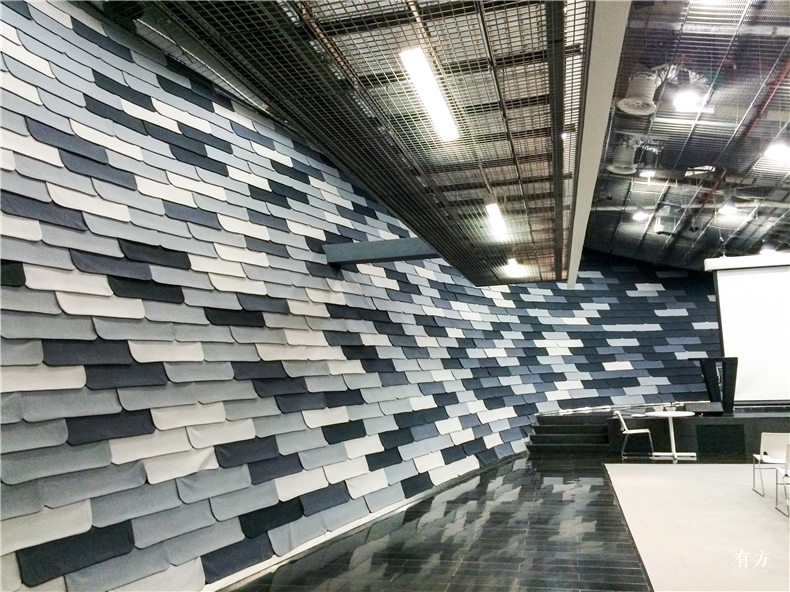
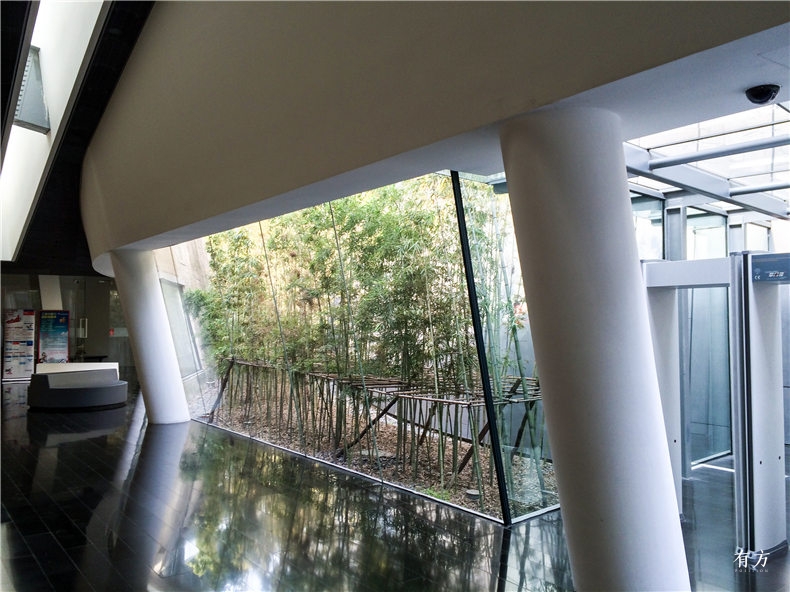
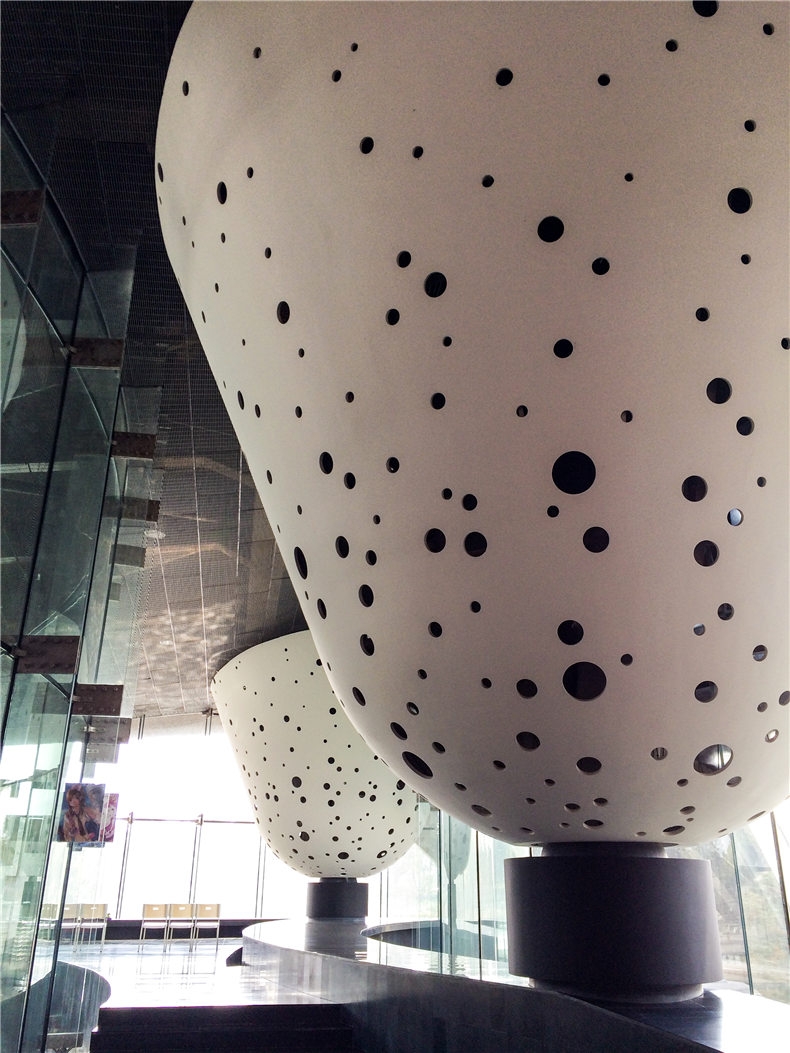
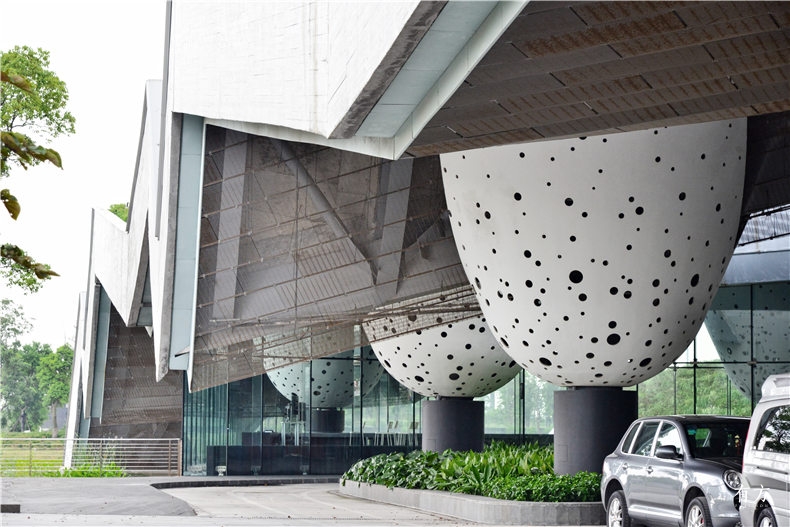
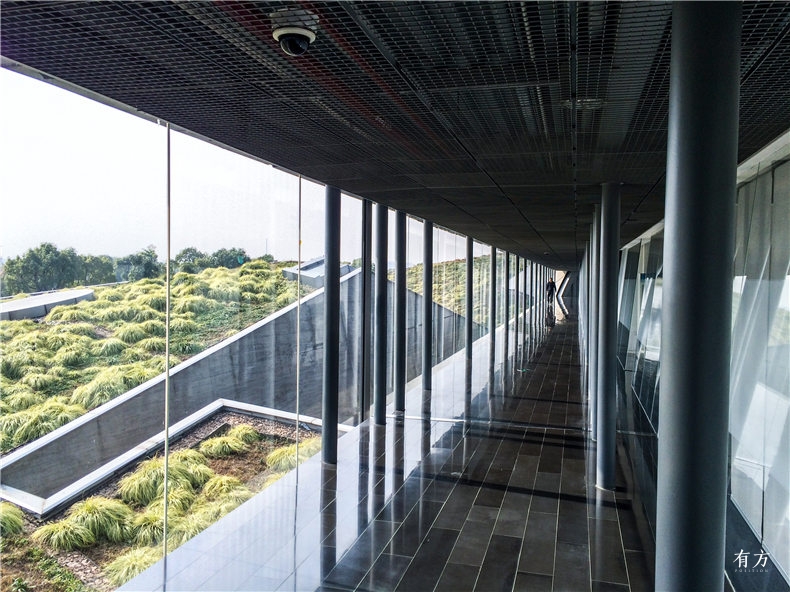
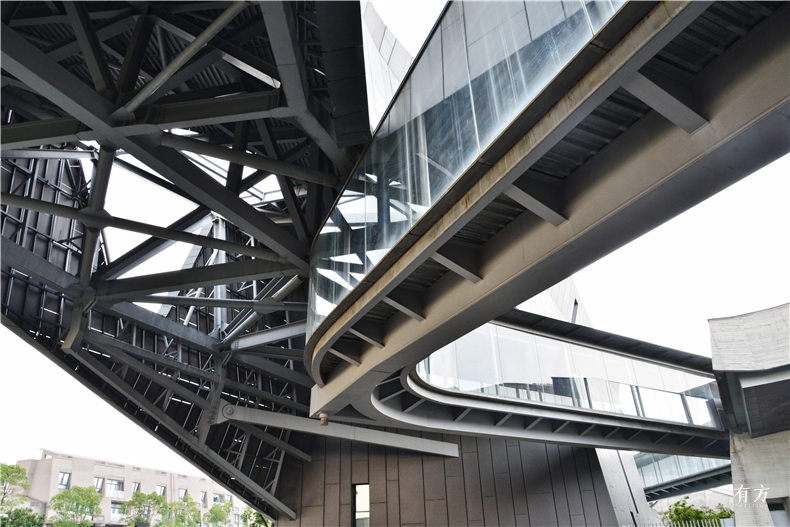
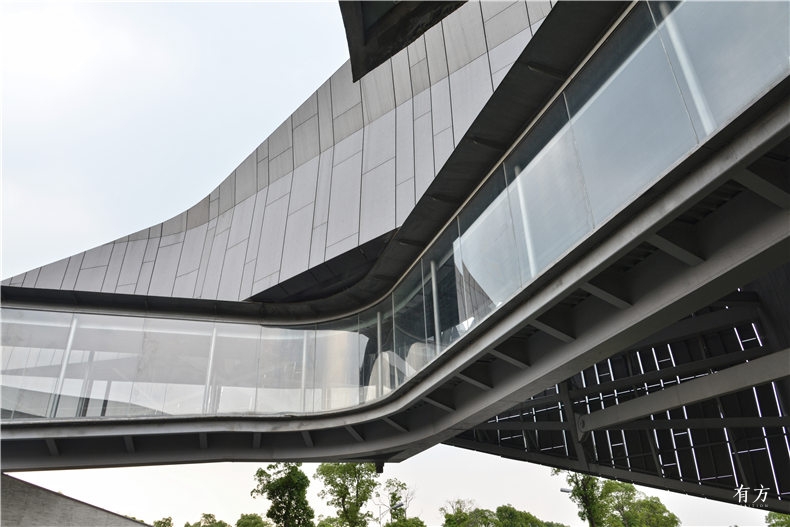
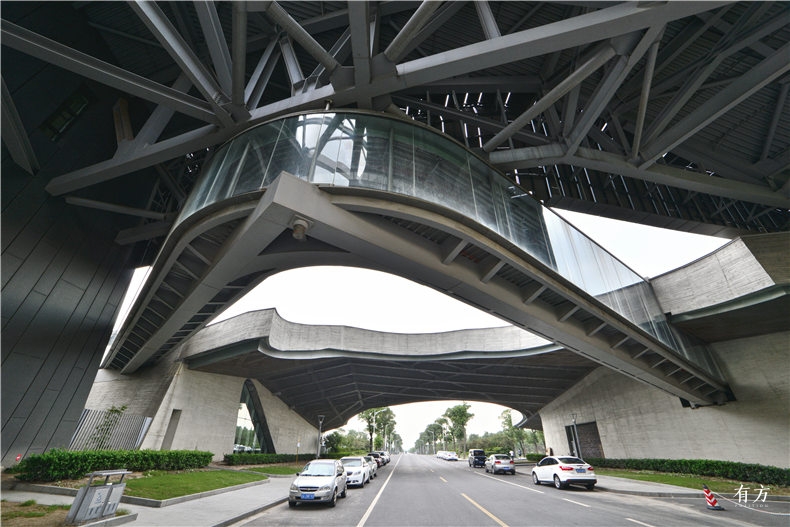
一系列的设计手法使得项目能够最大化能源的使用效率以及增加舒适性。西侧办公中心的景观绿色屋顶提供了热保护层,以此减少热辐射以及冷却支出。立面的双层表皮以及隔热玻璃幕墙能最小化太阳得热,并改善整体能源使用效率。主要的流线空间、娱乐设施以及广场都提供了给员工交流的机会。办公建筑的窄形体量以及天光系统保证了员工能连续地使用自然光线。
A range of features on the project maximize both energy efficiency and occupant comfort. The West Campus’s landscaped green roof provides thermal mass that limits the heat gain and reduces cooling expenditures. The façade’s double skin and insulated glass curtain wall minimize solar heat gain and improve overall efficiency. The central circulation spine, along with the recreational amenities and plazas provide opportunities for chance encounters and places for employees to gather without the confines of cubicles or unnecessary divisions. The narrow profile of the office building combined with a system of skylights ensure that employees have continuous access to natural daylight.
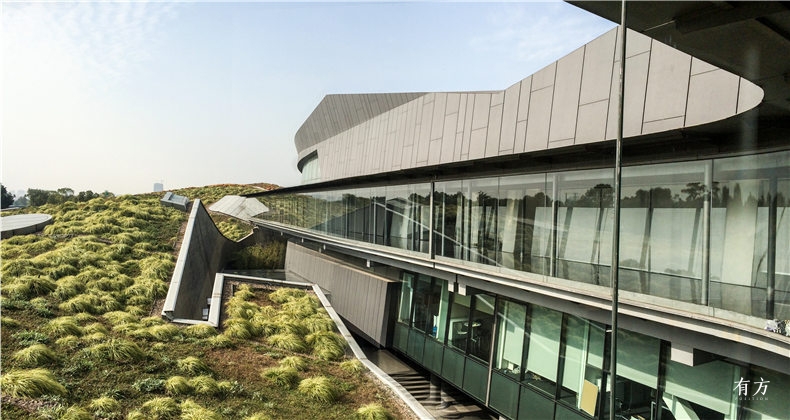
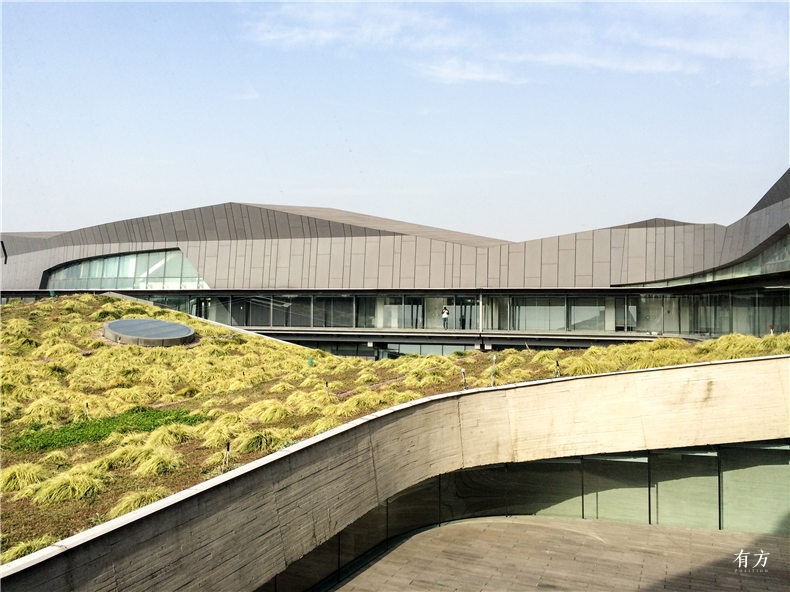

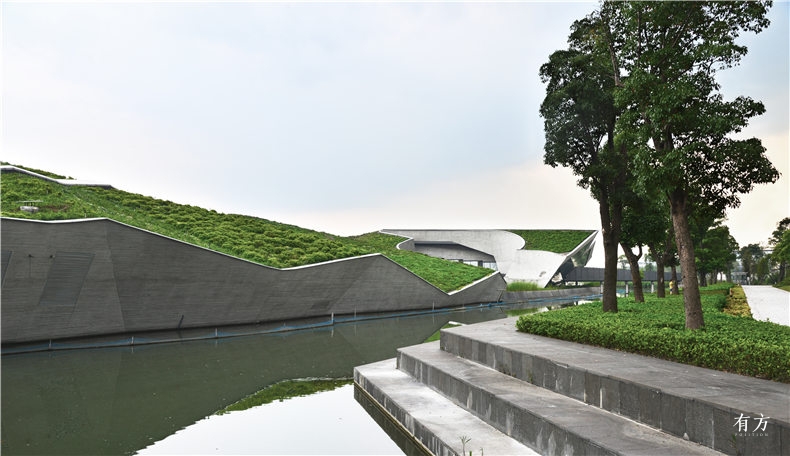
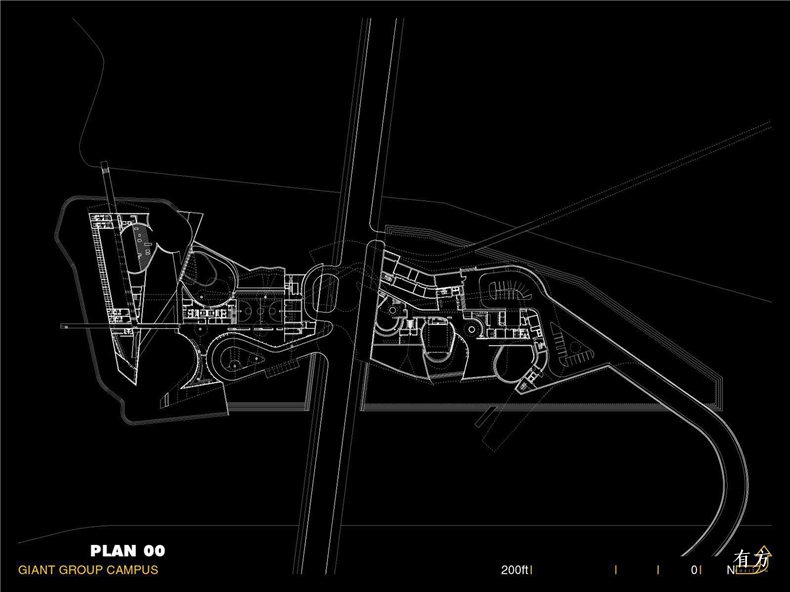
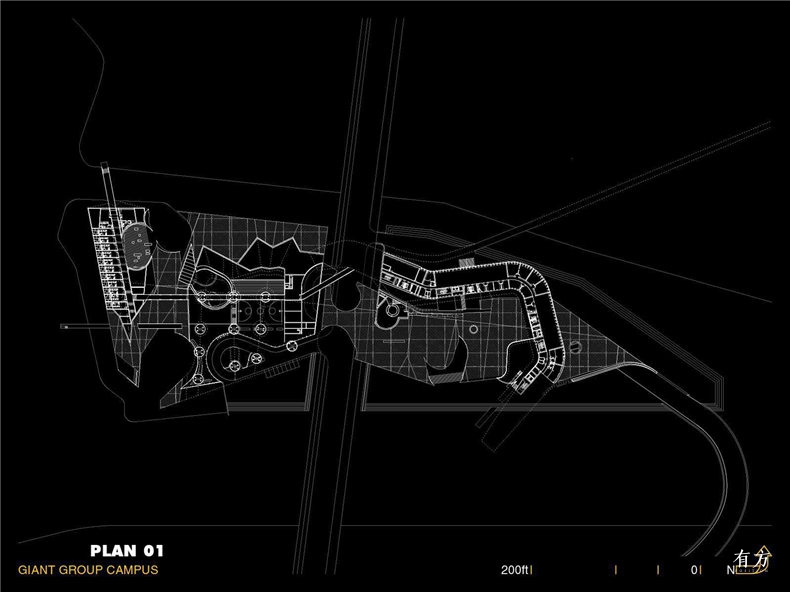
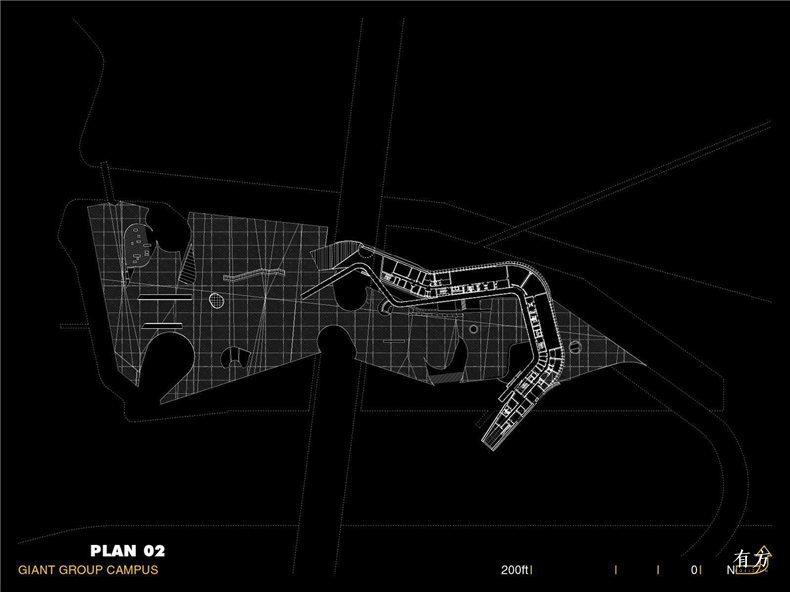
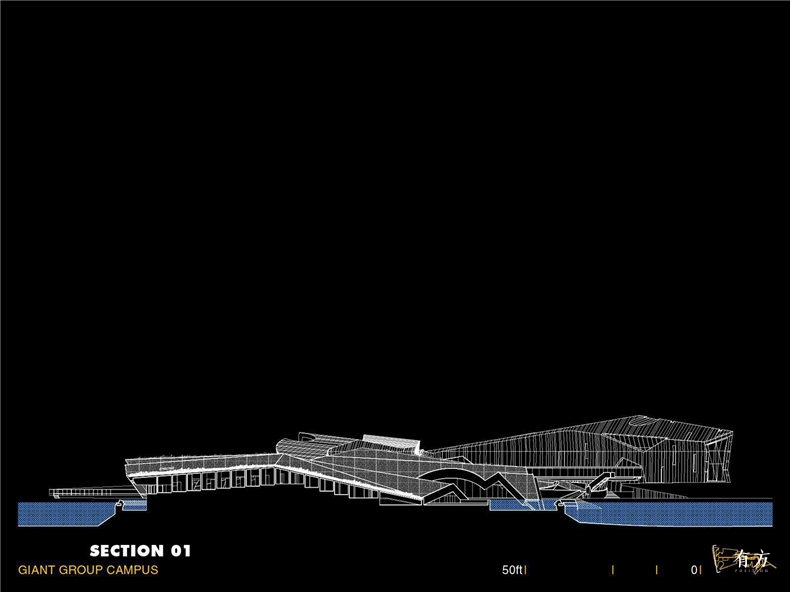
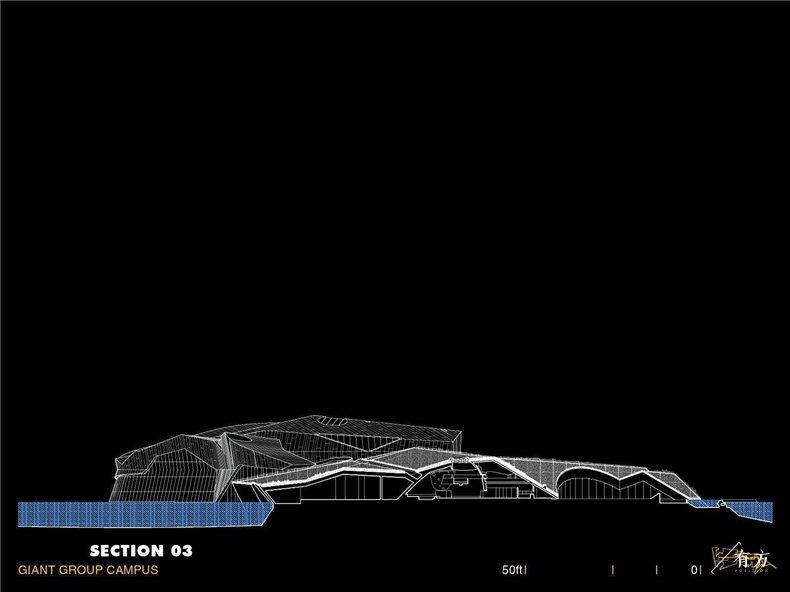
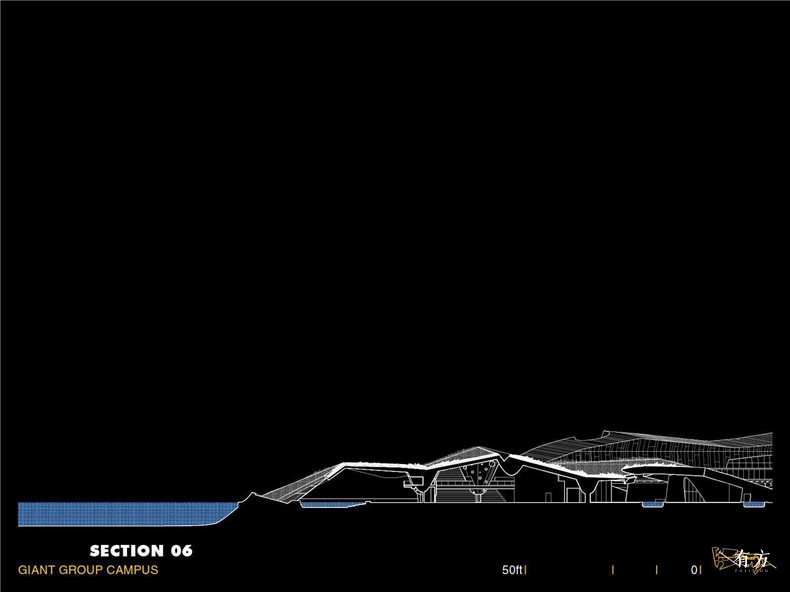
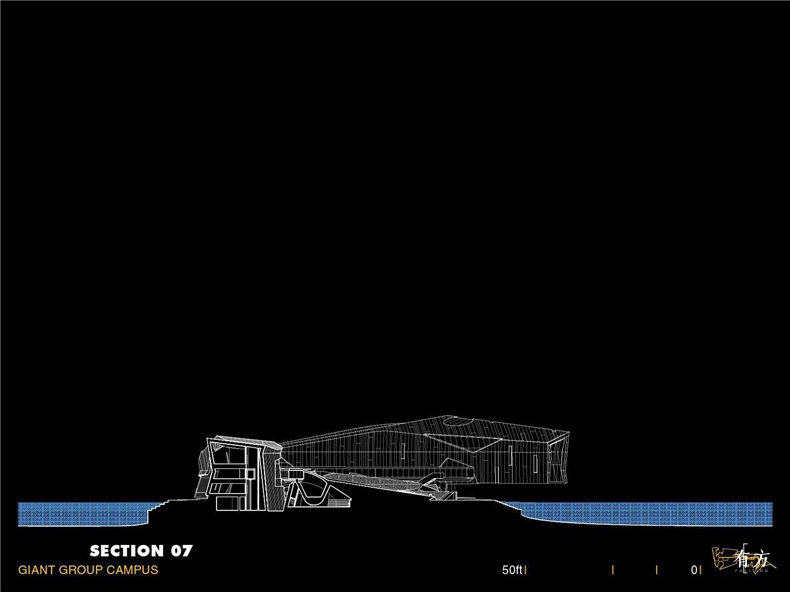
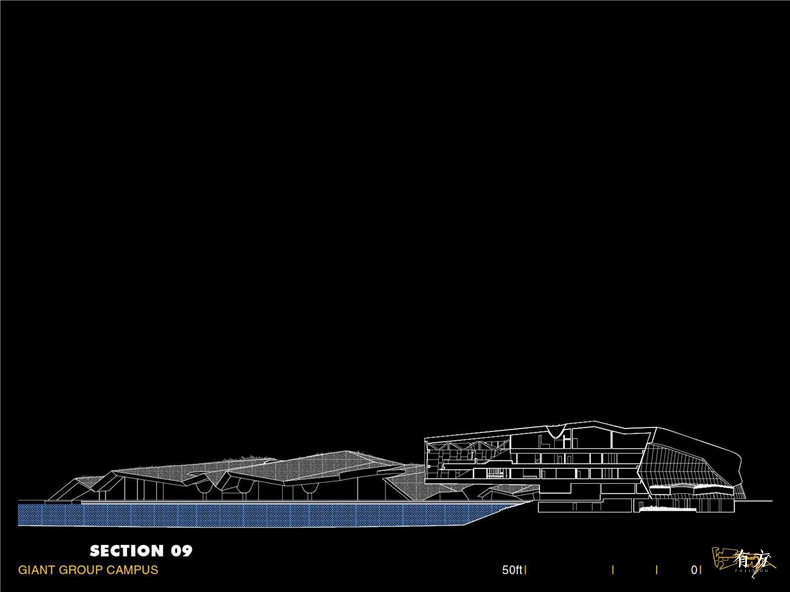
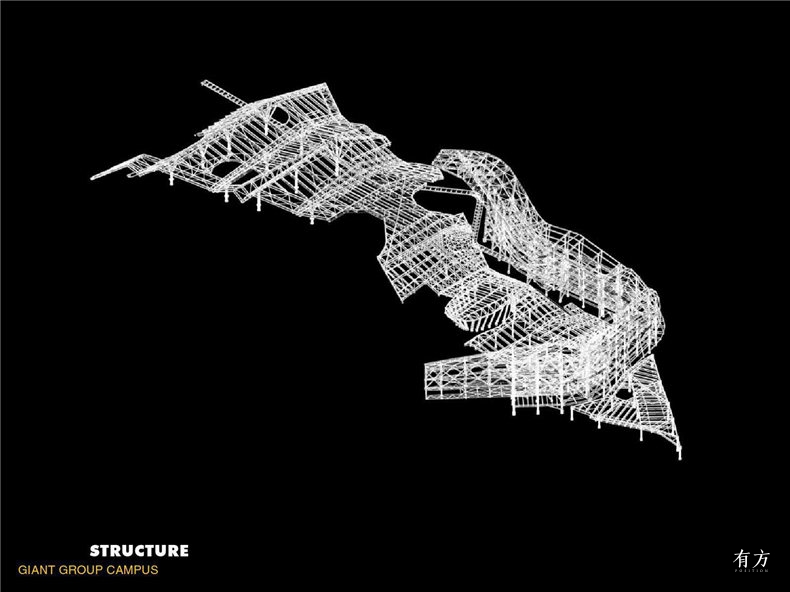
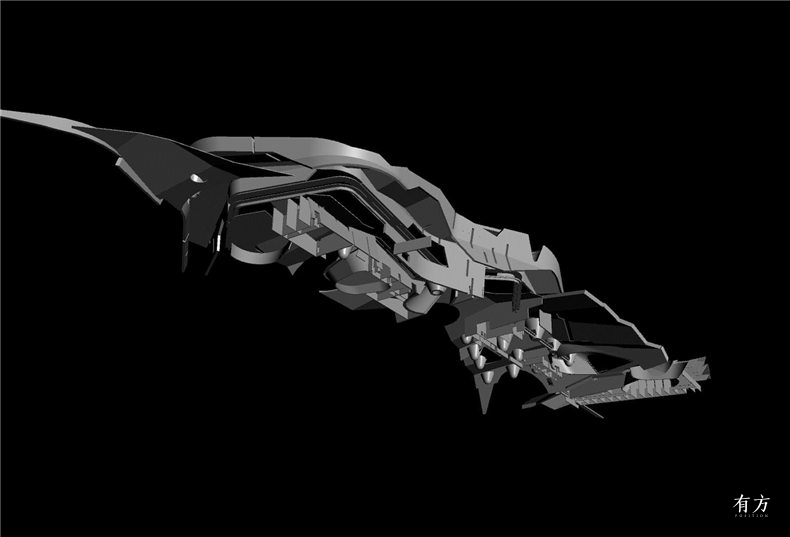
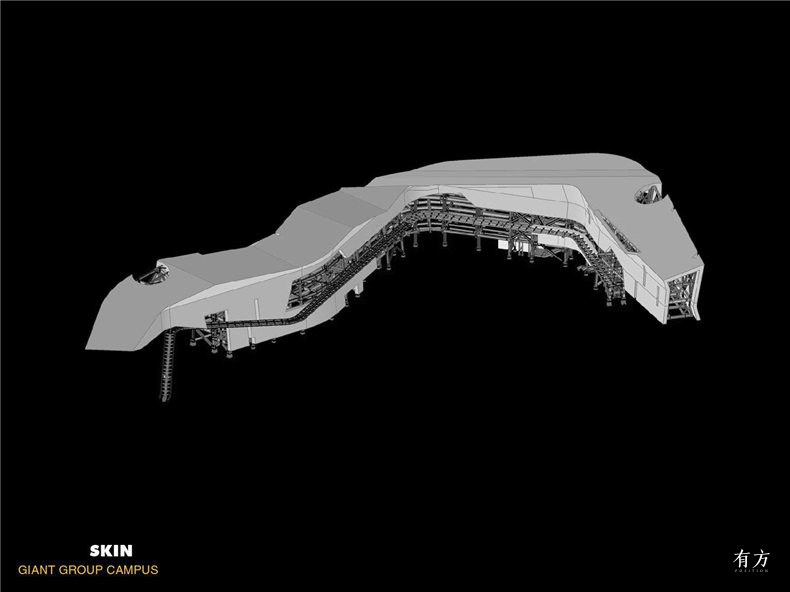
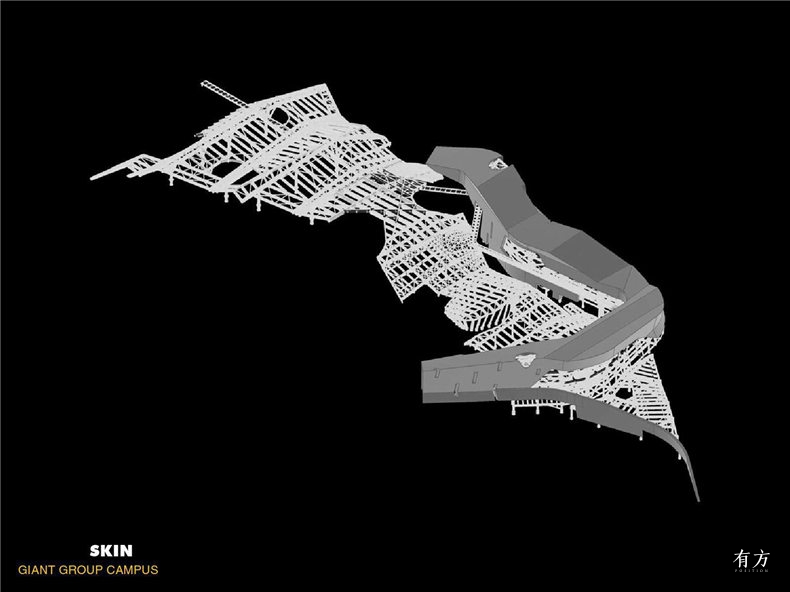
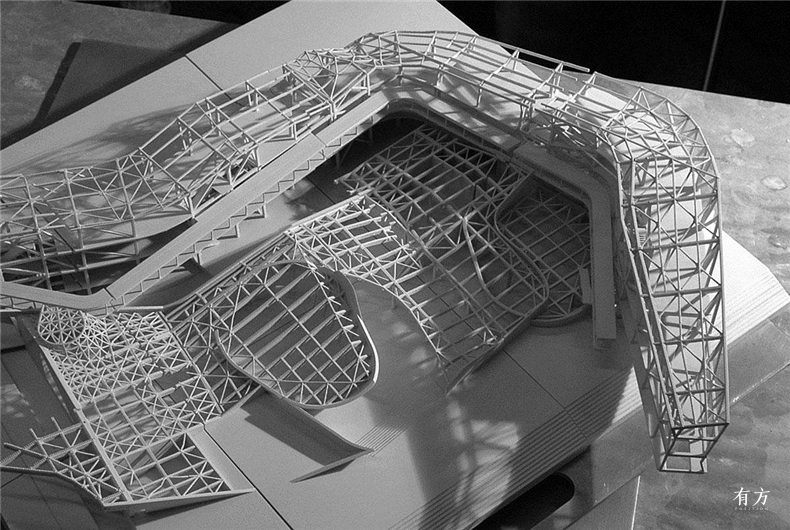
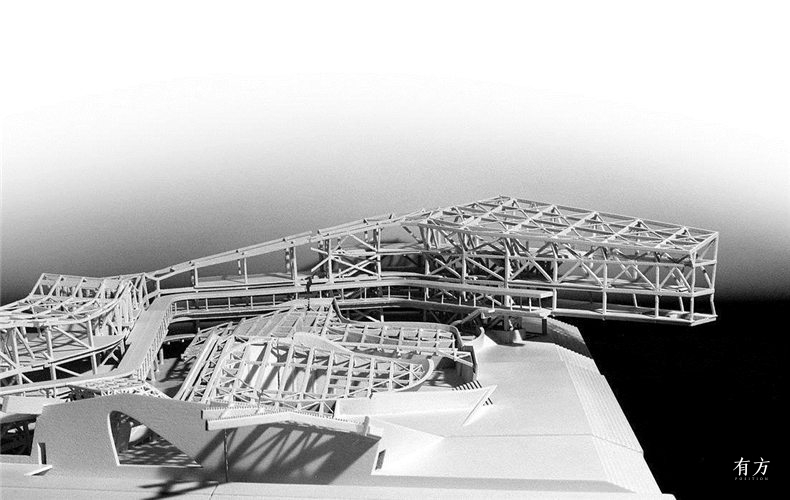
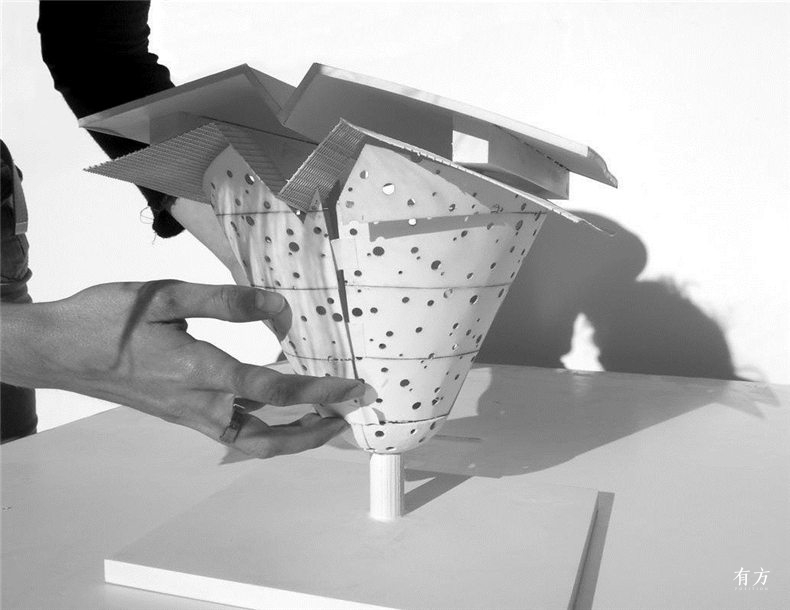
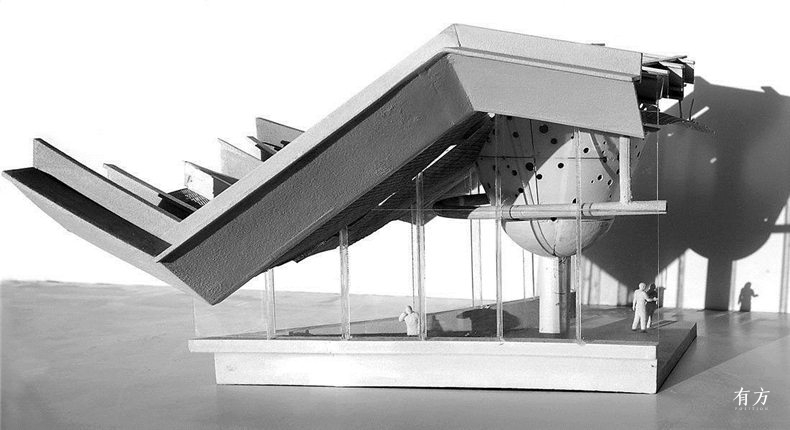
项目名称:巨人网络总部办公楼
位置:上海,中国
客户:巨人网络
项目总面积:23,996 平方米
功能:巨人集团总部和办公,主席办公与休憩,及巨人集团员工休闲,招待所,图书馆,多功能演艺厅
设计时间:2005—2006年
建造时间:2006—2009年
项目类型:办公
版权声明:本文版权归有方所有,项目介绍由墨菲西思授权发布,转载请通过邮件或电话与有方媒体中心取得授权。
上一篇:日本不止有妹岛和世,还有长谷川逸子 | 首届RA建筑奖公布
下一篇:设计的本质是为了解决问题:蓝城设计baDesign的2017年